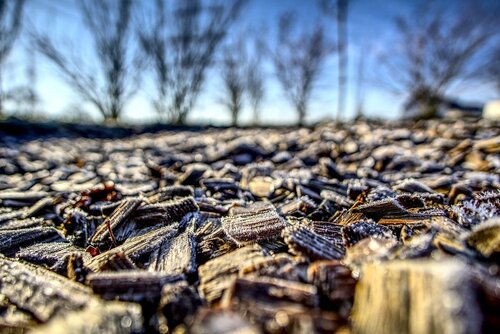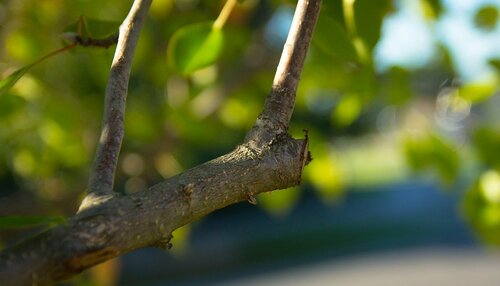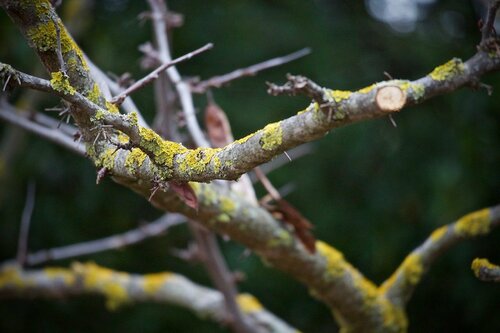Tree Care Checklist: How to Keep Trees Healthy This Fall/Winter

As the summer months bid adieu and make way for fall, it’s time to start thinking about your trees. The spectacular foliage transformations in fall from green to rich bursts of crimson, gold, and amber indicate that winter is well on its way. And winter brings along the dipping temperatures that can harm your trees. To protect your trees from the impact of the dry, cold, and harsh winter environment and to keep them healthy, you need to take appropriate steps.
Here is a tree care checklist to keep your trees healthy during fall and winter
Enrich the Soil
Trees need the soil beneath them to be rich in nutrients to flourish. But during the winter months, soil tends to lose certain nutrients, such as nitrogen and sulfur. This can impact the growth of your trees. To protect your trees from suffering such undesirable conditions, you need to enrich the soil.
There are a few things that you can do to achieve this goal, such as:
● Fertilize the Soil
Lack of nutrients is one of the most common tree issues that deserve your attention. To ensure that your trees continue to receive nutrients, you can use a slow-release fertilizer to enhance the soil in fall. These fertilizers slowly provide nutrients to the trees throughout the winter and beyond. Thanks to the consistent access to nutrients, your trees can grow new roots and leaves as the season progresses.
● Add Fresh Mulch
Organic mulch can go a long way to help your trees thrive during fall and winter. You can prepare organic mulch using wood chips, ground-up leaves, or weed-free straw. The next step is to cover the ground around the tree with 1 or 2 inches of mulch in fall before the ground starts to freeze. Avoid using too much mulch and always keep the mulch about 2 or 3 inches away from the tree trunk. Else, it can cause the bark around your tree to rot.

● Control Irrigation
While proper irrigation is important for trees in summer, they need much less water during the fall and winter seasons. This is because the soil remains moist naturally during these two seasons. If you continue to irrigate them like summer, it can cause the soil to flood. As a result, the roots can get suffocated, leading to the spread of root disease. So, make sure that the irrigation is reduced to the point where the soil stays moist to touch but not flooded.
Prune and Remove Leaves and Branches
Pruning and cleaning up are essential tree care steps. They enable you to handle the leaves and branches properly.
● Prune and Trim Trees
Pruning is the process of selectively removing diseased, dead, or unsafe branches from your trees. Apart from getting rid of unwanted branches, pruning helps to improve the tree structure and boost healthy growth. If you don’t trim lifeless branches, they can suffer further damage from winter winds and snow. Use sharp forestry axes to cut cracked or diseased limbs. Take care to make the cut close to the trunk so that no stub is left behind and allow the exposed wound to heal naturally. If you find pruning difficult to handle, you can engage a certified arborist to handle it.

● Clean-Up and Recycle Leaf Piles
It is important to clean up the fallen leaves that pile on the ground. If you avoid doing this, it can cause snow mold, a fungal disease that infects grass. You can compost the leaves and turn them into good organic mulch that can be used later.
Prepare for Winter
Apart from cold temperatures, winter brings along ice, frost, and snow. If you take measures to care for your trees in winter, you can protect them from harm. Here are a few ways to protect your trees from the winter effect.
● Provide Support for Weak Branches
If your trees have some large but weak branches, you will have to provide a bit of extra support so that they can withstand the harsh winter conditions. Cabling and bracing can be effective techniques to reduce the stress on your trees from heavy snow or windy conditions.
● Maintain Hydration
Harsh winter can freeze the roots of your evergreen trees and cause water loss in the needles. Ensure that they remain hydrated throughout the winter. Go for deep root watering of your plants and trees every week through fall until the ground begins to freeze. But see to it that the soil isn't saturated with water.
Inspect for Pests and Disease
While you are engaged in taking care of your trees for fall and winter, take out some time to inspect for pests and diseases as well. If allowed to get out of control, they can damage and sometimes even kill your trees.
● Look for Signs of Disease Damage
The first step is to identify the disease or pest infecting your tree. The next step is to take suitable action to treat the issue effectively. But identifying pests and diseases can be a challenge for someone who is not experienced in this task. For instance, early fall color may indicate an underlying problem. Certain varieties of mushrooms can grow at the base of trees and attack the roots, causing them to decay. A certified arborist can give you the expertise needed to identify and eliminate such issues.

● Identify Potential Safety Hazards
If your trees aren’t cared for, they can turn into safety hazards. For instance, cracked branches or dead limbs can be a threat to your house or property. Fall is the right time to identify such issues and call an arborist to fix the matter professionally.
In Conclusion
Taking care of your trees in fall or winter is not a challenge if you know how to go about it. We hope the checklist mentioned above will help you to start your tree care exercise effectively.





